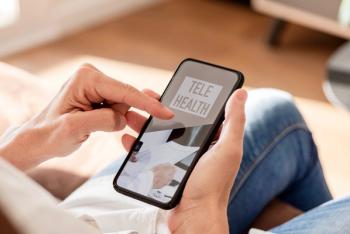
Futureproofing your organization against tech disruptors
For practices that have been slow to adopt new technologies, the stakes are much greater as the urgency to get up to speed is intensifying.
With the coronavirus pandemic, technology adoption has been accelerating far more quickly than is typical. Practices are being pushed to begin using telemedicine tools, patient portals, and other digital patient interaction platforms and solutions. Not only is there a growing obvious need for these types of technologies, but patients are now expecting to be able to interact with their providers electronically and access their records from the practice and from all related health systems, labs, and specialists.
Additionally, under the current circumstances, the gaps in public health reporting are increasingly evident, which puts extra emphasis on the need for improvements in information sharing. The need for efficient data integration and sharing is growing, and there are significant disparities in healthcare organizations’ ability to quickly collect and view patient data from within the organization and from external sources.
To support these existing needs and expectations, and to be able to adapt and scale in response to future demands, having fundamental interoperability capabilities in place is essential. For practices that have been slow to adopt these types of technologies, the stakes are much greater as the urgency to get up to speed is intensifying.
Healthcare organizations that are slow to adopt integration technology are not dragging their feet or burying their heads in the sand. Conversely, it’s typically a matter of can’t rather than won’t. Financial and operational barriers are usually the challenges organizations are up against when it comes to addressing and managing issues associated with data integration.
That said, the need to connect and exchange data bidirectionally with other constituencies is ever growing, and at this point, critical. With the entirety of healthcare across the globe feeling the effects of COVID-19, it’s never been more important to be mindful of the expanding requirements of interoperability. The need for contact-less care is redefining the way healthcare organizations use technology. In order to accommodate the rising need for data and information sharing, having flexible tools in place to adjust and scale appropriately is essential.
An overlooked potential side effect of the COVID-19 pandemic is the likelihood that this will accelerate efforts by “digital disruptors” like Google and Amazon to leverage their longstanding experience in customer relationship management and ability to rapidly scale, interpret, and analyze data, to swoop in and take over consumer relationships in healthcare. When practices adopt technology that allows patients to connect with their PCP digitally and access their health information online, it helps to foster and strengthen the unique bond between the patient and the clinician that digital disruptors cannot duplicate. Deepening patient/provider relationships and practice loyalty may be the only effective and sustainable way for practices to fend off the looming threat of tech giants that have the power to disintermediate physicians and commoditize care in ways that could be damaging to the longevity of the practice.
Practices should also be encouraging patients to use the practice’s provider portal and find ways to maximize the patient’s digital experience by creating robust offerings via their website and apps. Forward-thinking practices are starting to take measures to strengthen their “digital front door,” and are also considering a variety of ways in which patients are and want to be interacting with healthcare data systems.
Whether it’s being ready for the next wave of new/necessary technology, managing patient care digitally, or sending/receiving data across disparate locations, practice leaders should be thinking about what they can be doing now to support these existing demands and how they can best prepare for the inevitable next challenge in healthcare.
The good news for practices is that the tools required to support the growing reliance on, and evolution of, healthcare technology already exist and are readily available for those who want it. While we don’t yet know what the next industry hurdle will be, experience shows us that we can never be too prepared.
Newsletter
Optimize your practice with the Physicians Practice newsletter, offering management pearls, leadership tips, and business strategies tailored for practice administrators and physicians of any specialty.




